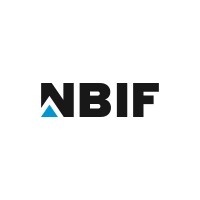Overview: New Brunswick agriculture grants and farm funding
New Brunswick agriculture grants, agri-food funding, and cost-shared programs help producers and processors invest with reduced risk. Organizations can combine non‑repayable contributions, matching grants, rebates, and government-backed loans to finance farm equipment, greenhouse upgrades, irrigation, soil health, energy efficiency, and food processing capacity. The Sustainable Canadian Agricultural Partnership (often abbreviated SCAP or “Sustainable CAP”) provides core federal–provincial funding streams, complemented by income support tools such as AgriStability, AgriInvest, AgriInsurance, and AgriRecovery. Additional support may be available from the NB Department of Agriculture, Aquaculture and Fisheries (DAAF), Opportunities New Brunswick (ONB), the Atlantic Canada Opportunities Agency (ACOA), Farm Credit Canada (FCC), and the Canadian Agricultural Loans Act (CALA) program. Together, these mechanisms serve dairy, potato, blueberry, maple syrup, beef, poultry, horticulture, nursery and greenhouse operations, organic and regenerative farms, and value‑added processors across the province, including Moncton, Fredericton, Saint John, Edmundston, Bathurst, Miramichi, Carleton County, Kent County, Westmorland County, and the Madawaska region.
Why funding matters for NB producers and processors
Strategic investment improves productivity, biosecurity, and market readiness while supporting environmental stewardship and climate adaptation. For example, farm equipment grants in New Brunswick can accelerate precision agriculture adoption—GPS/auto‑steer, variable rate technology, and on‑farm data tools—reducing input costs, improving yields, and supporting soil and water conservation. Energy efficiency farm grants in NB can fund energy audits, solar for farms, heat pumps for barns, ventilation, lighting upgrades, and heat recovery systems in dairy or poultry facilities. Food processing grants in New Brunswick can modernize cold storage, packaging, traceability, and HACCP compliance, enabling export growth and stronger food security. For young and beginning farmers, targeted grants and training support lower barriers to entry, while Indigenous agriculture funding in New Brunswick supports food sovereignty, land access, and community-led projects.
Core programs under the Sustainable Canadian Agricultural Partnership (SCAP)
SCAP New Brunswick funding is delivered through themed, cost‑shared streams that typically reimburse a portion of eligible project costs. While criteria vary by stream, applicants commonly develop a farm business plan, obtain quotes for equipment or services, and document environmental or market outcomes.
Common SCAP-aligned themes
- Environmental sustainability and climate‑smart agriculture funding in NB (soil health grants, cover crop incentives, riparian buffers, water management, manure storage upgrades, composting infrastructure, biodiversity and pollinator habitat).
- On‑farm innovation grants in New Brunswick (pilot projects, precision agriculture, controlled environment agriculture, agritech demonstrations, livestock handling and welfare innovations).
- Market development and value‑added agriculture funding in NB (branding and packaging grants, e‑commerce for farms, direct‑to‑consumer and farmers’ market funding, export marketing and trade show support).
- Food safety, traceability, and biosecurity (HACCP/food safety funding, cold chain logistics grants, traceability barcode systems, veterinary and biosecurity upgrades).
- Workforce development and training grants (farm safety training, pesticide safety, equipment operator training, leadership and management skills).
Examples of eligible expenditures
- Equipment modernization funding for NB farms: precision planters, GPS guidance, variable‑rate controllers, grain moisture sensors, and auto‑steer kits.
- Energy and water systems: solar PV arrays, heat pumps for barns, insulation, efficient fans and motors, irrigation pumps, precision irrigation controls, tile drainage with mapping, and on‑farm water storage.
- Environmental improvements: manure management systems, compost pads and leachate controls, riparian buffer establishment, fencing for off‑stream livestock watering, and wildlife damage mitigation.
- Value‑added processing: cold storage grants, processing line equipment, grinders, mixers, packaging and labeling systems, food‑grade flooring, and sanitation equipment.
Income and risk management: AgriStability, AgriInvest, AgriInsurance, AgriRecovery
- AgriStability New Brunswick helps stabilize income when margins fall due to production losses, market declines, or rising costs. Applicants file program forms annually; benefits may trigger when a reference margin drops below a set threshold.
- AgriInvest New Brunswick is a matching account that allows producers to make annual deposits and receive a government match up to a limit, creating a cash reserve for risk mitigation or investment.
- AgriInsurance New Brunswick provides crop and livestock insurance options to protect against weather, pests, and disease; premiums are partially cost‑shared.
- AgriRecovery New Brunswick supports disaster recovery after events like drought, floods, hurricanes, or disease outbreaks, complementing other programs to restore capacity.
These tools can be layered with SCAP cost‑shared grants to create a comprehensive resilience strategy for NB farms and agribusinesses.
Sector-specific support in New Brunswick
Dairy farm grants in New Brunswick
Dairy operations often seek barn upgrade grants, milking system modernization, manure storage upgrades, sand and bedding management, ventilation, and heat recovery. Methane reduction technology grants and energy efficiency measures—variable speed drives, plate coolers, heat pumps—can reduce emissions and costs. Farm safety grants may fund handling systems and training.
Potato farm grants in New Brunswick
Potato sector priorities include precision planting, soil health and erosion control, irrigation and drainage improvements, storage ventilation and refrigeration, and cold‑chain logistics. Grants may support potato storage facility funding, controlled atmosphere upgrades, and processing line equipment. Soil testing subsidies and cover crop funding support long‑term productivity.
Blueberries, maple syrup, and beekeeping
- Blueberry farm funding programs in NB can cover harvesters, sorting lines, pollinator habitat, frost protection, and access roads or culverts where eligible.
- Maple syrup grants in New Brunswick may support tubing, mainlines, pumps, sap collection, evaporators, RO systems, and energy‑efficient upgrades.
- Beekeeping startup grants and apiculture support may include beehives, extractors, queen breeding, biosecurity training, and integrated pest management (IPM) tools.
Greenhouses, horticulture, and controlled environment agriculture
Greenhouse grants in New Brunswick often fund heating efficiency, thermal curtains, energy screens, LED lighting, CO2 enrichment controls, automation, fertigation, and water recirculation. Hydroponic, aquaponic, vertical farming, and nursery operations may access controlled environment agriculture funding, including climate batteries and smart monitoring.
Livestock, poultry, and diversified farms
Livestock handling grants, biosecurity upgrades, off‑stream watering, fencing, gates, chutes, and pasture improvement grants help animal welfare and grassland health. Poultry barn funding can support ventilation, heat recovery, lighting upgrades, biosecurity doors and anterooms, and traceability equipment.
Environmental stewardship and climate adaptation
Soil and water conservation grants
Soil health grants in New Brunswick can fund soil testing, variable‑rate lime applications, cover crops, green manures, reduced tillage equipment, and erosion control structures. Water management grants may include irrigation ponds, tile drainage design and mapping, precision irrigation controls, and drip systems.
On‑farm renewable energy and efficiency
On‑farm renewable energy grants in NB commonly support solar for farms, small wind (where applicable), and biomass heating for greenhouses. Complementary energy programs can fund energy audits, lighting retrofits, ventilation upgrades, heat pumps for barns, and heat recovery ventilators in dairy or poultry facilities.
Biodiversity, buffers, and wildlife co‑existence
Riparian buffer funding, pollinator habitat grants, wildlife damage compensation, and fencing for sensitive areas can protect waterways, improve habitat, and reduce crop losses. Composting infrastructure grants and manure storage upgrades support nutrient management and greenhouse gas reduction.
Value-added processing, food safety, and export readiness
Food processing grants and facility modernization
Food processing grants in New Brunswick can cover processing line equipment, hygienic flooring, drains, wash stations, packaging and labeling equipment, metal detection, and automation. Cold storage grant programs help maintain product quality for potatoes, blueberries, dairy, meat, and vegetables.
HACCP, traceability, and compliance
HACCP/food safety funding and traceability incentives support prerequisite programs, audits, certification fees, staff training, barcode/RFID systems, and software. These investments enable market access, private‑label opportunities, and co‑packing partnerships.
Market development and branding
Export marketing funding for agriculture in NB can support trade shows, market intelligence, packaging translation, and compliance testing for US buyers and other markets. Branding and packaging grants, e‑commerce for farms grants, and digital adoption tools enable direct‑to‑consumer sales, CSA programs, and farmers’ market growth.
Inclusive access: young farmers, women, Indigenous producers, newcomers
Beginning farmer grants in New Brunswick lower entry costs for land, infrastructure, and equipment. Farm mentorship funding and farm business planning grants can build managerial capacity. Women in agriculture funding, newcomer farmer funding, and co‑op farm funding support diverse ownership models. Indigenous agriculture funding in New Brunswick prioritizes food sovereignty, traditional foods, land stewardship, and processing capacity for community food hubs.
Regional opportunities across New Brunswick
Opportunities may vary by county and municipal region due to sector mix and infrastructure. Carleton County potato farms may prioritize storage and irrigation; Kent County blueberry grants focus on harvesting and frost protection; Westmorland County horticulture and greenhouse funding emphasizes energy efficiency; Madawaska and Edmundston areas highlight bilingual services; Saint John and Moncton regions strengthen agri‑food processing and logistics. Rural development programs may also support community food hubs, cold‑chain trucks, and school food suppliers.
Loans and complementary financing
- Farm Credit Canada (FCC) loans in NB provide working capital and term financing for equipment, land, and buildings.
- The Canadian Agricultural Loans Act (CALA) program offers government‑guaranteed loans through financial institutions.
- Opportunities New Brunswick (ONB) and ACOA may support agri‑food projects with loans or repayable/non‑repayable contributions.
Combining grants with low‑interest loans, interest rate buydowns, and matching grants can complete capital stacks for barn upgrades, cold storage, and processing expansions.
Eligibility and how to apply for agriculture grants in New Brunswick
Typical eligibility criteria
- Applicants are producers, processors, or agri‑food organizations operating in New Brunswick.
- Projects align with program objectives (e.g., sustainability, innovation, market development, food safety).
- The farm or business is in good standing and can provide financial statements or a farm business plan.
- For cost‑shared programs, applicants provide matching funds and submit proof of payment for reimbursement.
How to apply
1. Define your project and desired outcomes (yield gains, emissions reduction, market access, safety).
2. Identify suitable NB agriculture funding programs (SCAP streams, DAAF initiatives, AgriStability/AgriInvest/AgriInsurance, ONB/ACOA for processing).
3. Gather documentation: quotes, designs, environmental plan, training outlines, and a cash‑flow forecast.
4. Complete forms carefully, aligning milestones, budget categories, and metrics (soil organic matter, energy savings, export sales).
5. Submit before deadlines; keep copies of all materials.
6. If approved, track expenses, submit claims, and maintain records for audits.
Strengthening your application
- Demonstrate need with baseline data (energy bills, yield history, loss events).
- Quantify benefits: expected GHG reduction, water savings, food safety risk reduction, market growth.
- Show capacity: vendor quotes, implementation plan, and training schedule.
- Incorporate Environmental Farm Plan elements and risk management participation (e.g., AgriInsurance enrollment).
Cost-share rates, stacking, and timelines
Cost‑share rates and maximums vary by stream. Some categories prioritize small farms or first‑time applicants; others cap per‑project totals or per‑year limits. Stacking rules may allow combining provincial, federal, and municipal programs up to a maximum public contribution. Timelines typically include application windows, approval letters, and claim deadlines; purchases made before approval are often ineligible. Keep a clear Gantt chart and retain invoices, proof of payment, photos, and commissioning reports for claims.
Compliance, procurement, and audit readiness
Follow procurement rules such as competitive quotes above certain thresholds, made‑in‑Canada preferences where applicable, and conflict‑of‑interest declarations. For construction, ensure permits and engineering stamps. For processing equipment, keep commissioning records and operator training logs. Use traceability and inventory records to substantiate throughput improvements. Maintain an audit binder (digital or physical) with contracts, invoices, proofs of payment, photos, and performance data.
Common project types and keyword-aligned examples
Energy and climate projects
- On‑farm renewable energy grants NB: 50 kW solar PV for dairy barns and cold storage.
- Energy audit funding farms NB: identify HVAC and lighting savings.
- Heat pump incentives for barns in NB: milk house and poultry ventilation upgrades.
- Methane reduction dairy grants NB: manure storage covers, separators, and flare systems.
Water, soil, and infrastructure
- Irrigation system grants New Brunswick farms: drip for horticulture, pivots for potatoes.
- Tile drainage funding NB agriculture with mapping and outlet stabilization.
- Riparian buffer funding NB farms: fencing and native plantings.
- Compost pad and leachate system grants NB: stormwater controls and nutrient recycling.
Precision agriculture and safety
- Precision agriculture technology grants NB: GPS/auto‑steer rebate, variable‑rate application, soil mapping.
- Farm safety training grants New Brunswick: equipment lockout, confined space, pesticide safety.
- Tractor and equipment safety rebates NB: ROPS, guards, and lighting kits.
- Veterinary and biosecurity grants NB: quarantine areas, handwash stations, and traffic flow.
Value‑added and market growth
- Food processing equipment grants New Brunswick: wash/pack lines, slicers, fillers.
- Cold storage grant program NB: pre‑cooling tunnels and refrigerated rooms.
- Branding and packaging grants NB: bilingual labels and nutrition panels.
- Export readiness funding agri‑food NB: trade missions and certification testing.
Special audiences and project pathways
- Young farmer grants New Brunswick: down payment support (via loans), mentorship, and training modules paired with microgrants.
- Farm succession planning grants NB: advisory funding for transfer and tax planning.
- Land access grants for farmers NB: legal, surveying, and infrastructure.
- Community farm grants NB: shared equipment, irrigation, and training for CSA startup.
- Women in agriculture funding NB: leadership training and peer networks.
- Indigenous agriculture grants New Brunswick: community greenhouses, food hubs, and traditional foods processing.
Building a multi-year funding roadmap
A multi‑year plan sequences projects to maximize eligibility and impact:
1. Year 1: Environmental Farm Plan, energy audit, soil testing subsidy, and safety training.
2. Year 2: Precision ag equipment, irrigation upgrades, and manure storage improvement.
3. Year 3: Processing line equipment, cold storage expansion, and export marketing.
4. Ongoing: AgriStability, AgriInvest contributions, AgriInsurance coverage, and emergency preparedness funding.
Measuring outcomes and reporting
Define metrics pre‑project and track quarterly. Typical indicators include input reduction (%), energy savings (kWh), emission reductions (tCO2e), water saved (m³), yield changes (%), quality grade improvements, food safety audit scores, and export sales growth. Use these data to strengthen future applications and demonstrate value to lenders and partners.
Frequently targeted long-tail needs
Producers often search for precise solutions such as “dairy barn upgrade grants New Brunswick application,” “potato storage facility funding New Brunswick,” “greenhouse heating efficiency grants NB,” “organic certification funding for farms in NB,” “riparian buffer funding NB farms,” “tile drainage grant New Brunswick agriculture,” “farm labor housing grants New Brunswick,” and “abattoir equipment grants NB.” Programs usually require clear scopes, eligible cost categories, and environmental or economic outcomes tied to the province’s priorities.
Conclusion: Turning opportunities into investment
New Brunswick farm funding combines SCAP cost‑shared programs, income protection (AgriStability, AgriInvest, AgriInsurance, AgriRecovery), and complementary loans from FCC and CALA, alongside ONB and ACOA support for processors. By aligning projects with sustainability, innovation, safety, and market development, organizations can secure non‑repayable funding and unlock growth. A disciplined application process—strong documentation, measurable outcomes, and audit readiness—helps NB producers, agri‑food manufacturers, and cooperatives convert agriculture grants into durable advantages for the provincial economy and food system.



















